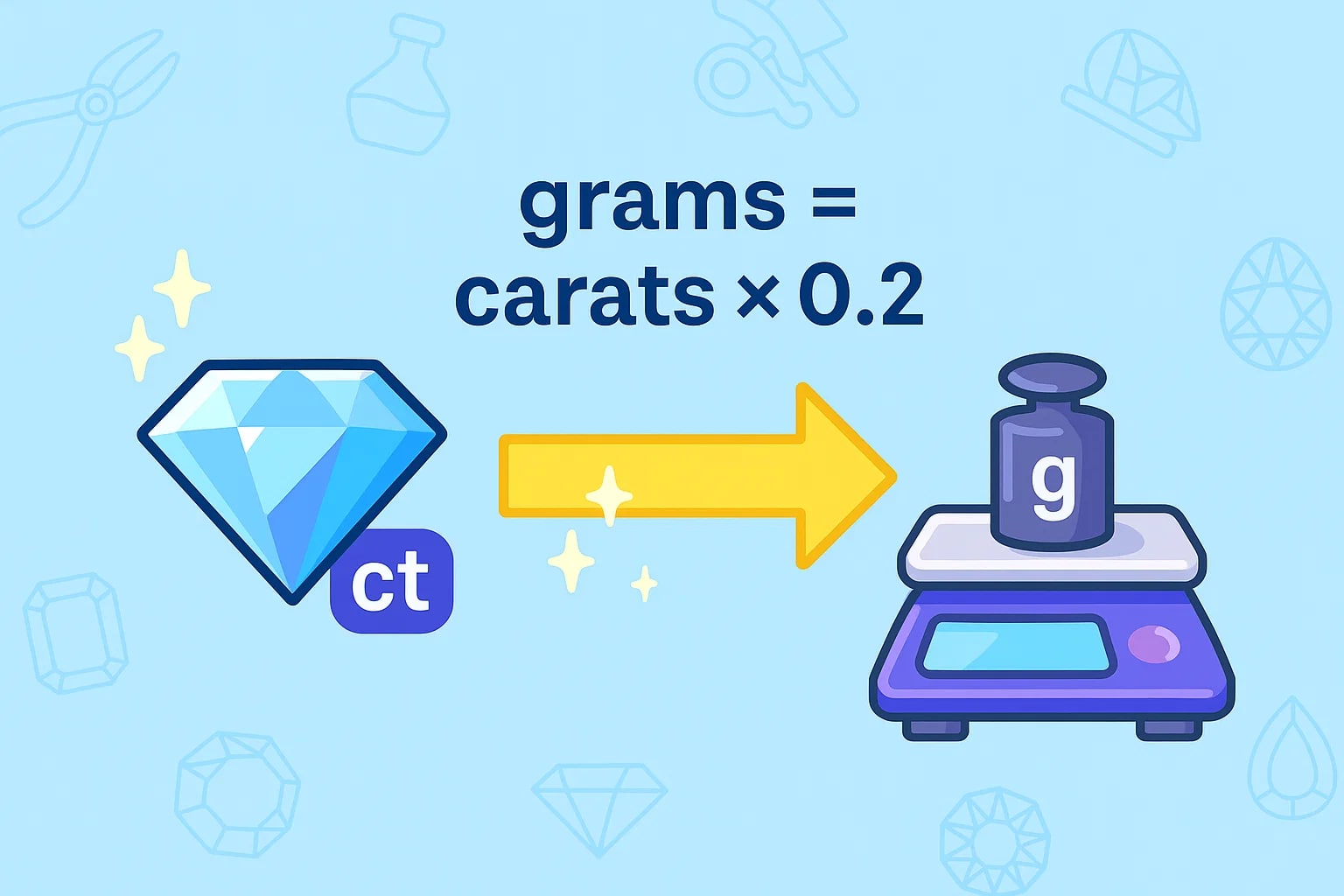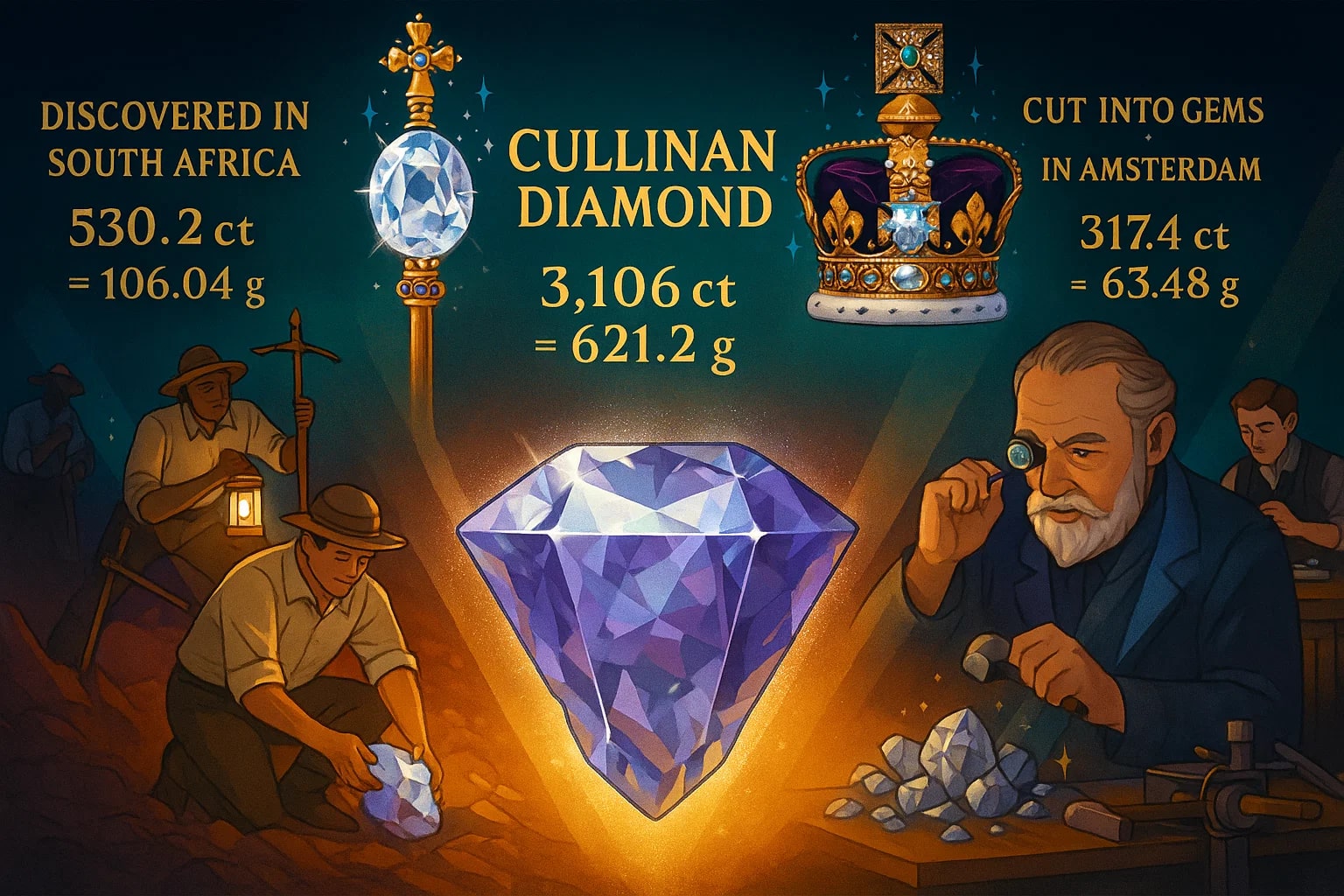carat to gram – How to convert ct to g
Converting carat to gram is a vital skill for jewelers, gem enthusiasts, and anyone dealing with precious stones. With a quick formula and a bit of context, you can transform gemstone weight from ct to g with total accuracy.
What is a Carat (ct)?
A carat is the standard weight unit for gemstones. Its value is fixed:1 ct = 0.2 g
The term traces back to the carob seed, once used as a natural weight measure in ancient trading. Carats are used worldwide for diamonds, sapphires, emeralds, and other precious stones. For example, a 5 ct diamond weighs exactly 1 g.
What is a Gram (g)?
A gram is a metric mass unit in the International System of Units (SI). It’s one-thousandth of a kilogram and used in nearly every field, from cooking to science. In jewelry, grams measure the total weight of a piece, including metal and stones.
How to convert carat to gram
The formula is simple:
grams = carats × 0.2
Example: A 2.5 ct ruby weighs 2.5 × 0.2 = 0.5 g.
The reverse conversion is just as easy:
carats = grams × 5
Example: A gold pendant with a 0.6 g sapphire is 0.6 × 5 = 3 ct.

Need precise weight changes for gemstones or any other mass unit? Our Weight Converter makes carat-to-gram swaps simple. For more unit types, explore the full Conversion Tools collection.
Do you know?
-
Carat fact: The largest cut diamond in the world, the Golden Jubilee, weighs 545.67 ct — that’s over 109 g.
-
Gram fact: In micro-scale science, a gram can be subdivided into a million micrograms — a necessity for weighing particles in nanotechnology research.
The Cullinan Diamond: A Tale of Gigantic Carats
In 1905, at the Premier Mine in South Africa, miners discovered what would become the most famous gemstone in history — the Cullinan Diamond. In its rough form, it weighed a staggering 3 106 ct, equal to 621.2 g. That’s heavier than a loaf of bread, but sparkling beyond imagination.
The diamond was eventually cut into nine major stones and dozens of smaller gems. The largest cut gem, the Cullinan I or “Great Star of Africa,” weighs 530.2 ct (106.04 g) and is set in the British royal scepter. The Cullinan II, weighing 317.4 ct (63.48 g), sits in the Imperial State Crown. Every piece from the Cullinan maintains meticulous documentation of its weight — in both carats and grams — a practice that reinforces the importance of accurate conversions.
Beyond its beauty, the Cullinan’s history reflects the global fascination with gemstone size and precision. Negotiations for its purchase, the cutting process in Amsterdam, and its eventual presentation to King Edward VII all hinged on the diamond’s record-breaking weight.
For modern gemologists, the Cullinan is more than a museum treasure. It’s a masterclass in the balance between size, weight, and value — proving that carat to gram conversions are not just numbers, but part of the storytelling of precious stones.

The Weight Behind the Brilliance
Every unit of measurement carries meaning. In the jewelry world, the carat may seem glamorous while the gram feels ordinary, yet together they form the language of precision and value. When a diamond is weighed at 1 024 ct — or exactly 204.8 g — it’s not just a statistic; it’s a bridge between tradition and science. From ancient traders using seeds as standards to modern gem labs certifying stones with laser precision, the carat to gram link has shaped how we buy, sell, and celebrate beauty. Next time you hold a gemstone, think of both numbers — the sparkle and the science — and how each tells part of its story.

